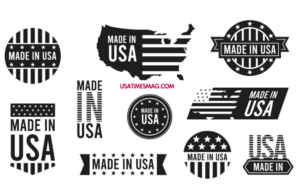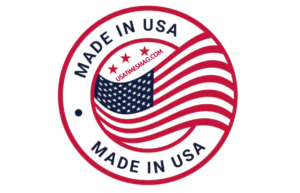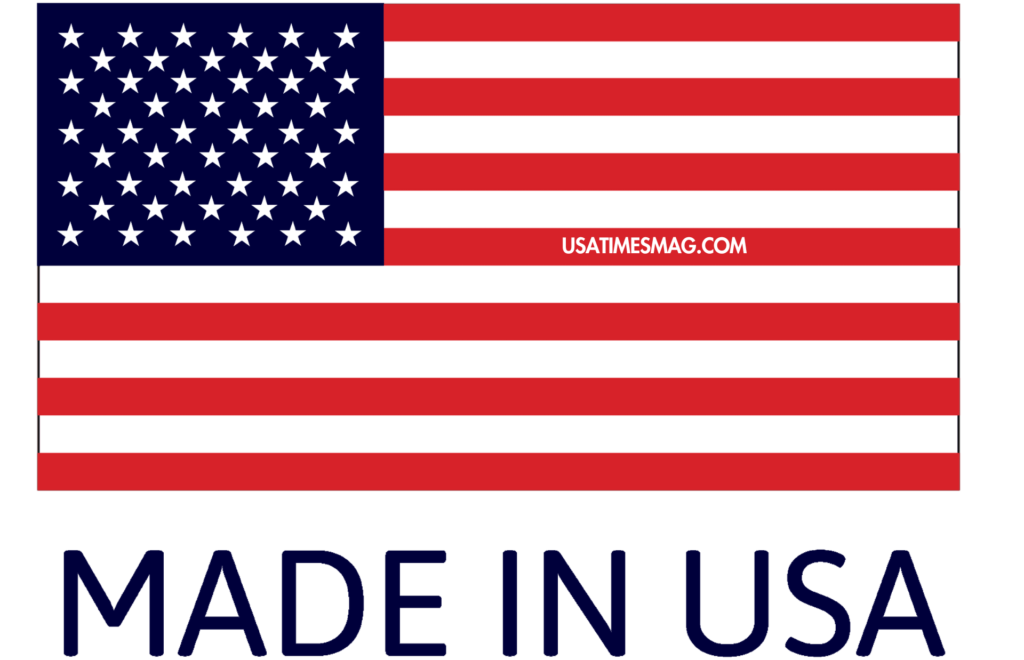The Made in USA logo is more than just a label on a product; it is a symbol of quality, pride, and trust. For decades, this emblem has represented American craftsmanship and a commitment to manufacturing excellence. As globalization expands, this logo continues to hold significant meaning for both consumers and manufacturers. In this blog, we delve into the importance of the Made in USA logo, its evolution, benefits, and what it means in today’s global market.
Table of Contents
ToggleA Brief History of the Made in USA Logo

The origins of the Made in USA logo can be traced back to the early 20th century. The industrial revolution positioned the United States as a manufacturing powerhouse, and the label became synonymous with high-quality goods. During the 1930s and 1940s, the logo gained prominence as a patriotic rallying point, encouraging consumers to support domestic industries, particularly during the Great Depression and World War II.
In the latter half of the 20th century, as international trade agreements increased the import of foreign goods, the “Made in USA” label became an important tool to distinguish American products. The Federal Trade Commission (FTC) officially stepped in to regulate the usage of the label, ensuring that it accurately represented the origin of products.
What Qualifies a Product to Display the Logo?
For a product to bear the Made in USA logo, it must meet stringent criteria set by the FTC. According to the FTC’s guidelines:
- The product must be “all or virtually all” made in the United States.
- The significant parts and processing must originate in the U.S.
- Minimal foreign content is allowed, but the overall production must take place domestically.
These strict standards ensure the integrity of the label and maintain consumer trust.
Why Do Consumers Value the Made in USA Logo?
Quality Assurance
-
- Products made in the USA are often associated with superior quality due to strict manufacturing standards and oversight.
- American companies prioritize durability, safety, and craftsmanship, which appeal to discerning customers.
Economic Impact
-
- Purchasing domestically made products supports local businesses, creates jobs, and contributes to the national economy.
- The manufacturing sector is a key component of America’s economic foundation.
Patriotism
-
- The Made in USA logo resonates with a sense of national pride.
- Consumers feel a connection to their heritage and contribute to the country’s prosperity by buying domestic goods.
Environmental Benefits
-
- Domestic production often has a lower environmental footprint due to stringent regulations on emissions and waste management.
- Shorter transportation distances reduce carbon emissions, making it a sustainable choice.
How Manufacturers Benefit from the Logo

For businesses, displaying the Made in USA logo offers competitive advantages:
- Brand Differentiation: The label sets products apart in a crowded marketplace, emphasizing quality and authenticity.
- Customer Loyalty: Studies show that consumers are willing to pay a premium for American-made products.
- Marketing Leverage: The logo serves as a powerful marketing tool, enhancing the brand’s story and appeal.
Challenges and Controversies
Despite its significance, the “Made in USA” label is not without challenges:
Mislabeling and Fraud
-
- Cases of companies falsely claiming their products are made in the USA undermine consumer trust.
- The FTC has increased enforcement actions to address this issue.
Global Supply Chains
-
- In today’s interconnected economy, many products rely on global supply chains, making it difficult to meet the FTC’s criteria.
- Companies often struggle to source all components domestically.
Cost Challenges
-
- Manufacturing in the U.S. can be more expensive due to higher labor and material costs.
- This sometimes makes American-made products less competitive in price-sensitive markets.
The Made in USA Logo in 2024 and Beyond

As of 2024, the Made in USA logo remains relevant in a rapidly changing global economy. Key trends include:
Reshoring Initiatives
Many companies are bringing manufacturing back to the U.S. to ensure supply chain resilience and capitalize on the demand for domestic goods.
Increased Consumer Awareness
Consumers are more informed about the origins of their products and actively seek out American-made options.
Technology in Manufacturing
Advanced manufacturing technologies, such as automation and robotics, are making it easier for companies to produce goods domestically.
Sustainability
With growing concerns about the environment, the Made in USA logo aligns with the movement towards ethical and sustainable consumption.
How to Verify Authenticity
Consumers can verify the authenticity of “Made in USA” claims by:
- Checking the company’s website for transparency in manufacturing practices.
- Looking for certifications or endorsements from trusted organizations.
- Reporting suspected fraud to the FTC.
The Emotional Connection of the Logo
Beyond practical reasons, the Made in USA logo evokes a sense of belonging and trust. For many, it symbolizes the hard work and ingenuity that define the American spirit. It’s a reminder of shared values and a commitment to quality.
Industries Embracing the Logo
While the Made in USA logo is found across various sectors, certain industries are particularly prominent:
Apparel and Textiles
American-made clothing brands emphasize ethical labor practices and superior craftsmanship.
Automotive
Iconic American car manufacturers like Ford and GM proudly display the label, appealing to loyal customers.
Food and Beverages
Locally sourced and produced food products highlight freshness and quality.
Electronics
High-tech gadgets manufactured domestically assure buyers of safety and innovation.
Conclusion
The Made in USA logo is more than a marketing tool; it is a testament to the values of quality, resilience, and patriotism. As consumers become increasingly mindful of their purchases, the logo’s significance continues to grow. For businesses, it offers an opportunity to stand out and build trust in an ever-competitive market.
In 2024 and beyond, the “Made in USA” logo will remain a cherished symbol, representing not just the origin of a product but the ideals and aspirations of a nation.
FAQs about Made in USA Logo
What criteria must a product meet to display the “Made in USA” logo?
To use the “Made in USA” label, a product must be “all or virtually all” made in the United States. This means that all significant parts, processing, and labor must originate from the U.S., with negligible foreign content. The Federal Trade Commission (FTC) enforces this standard to prevent deceptive claims.
Are there penalties for misusing the “Made in USA” label?
Yes, the FTC can impose civil penalties for false or misleading “Made in USA” claims. Companies found in violation may face substantial fines and are required to correct their marketing materials to comply with regulations.
Can products assembled in the U.S. with foreign components use the “Made in USA” label?
Products assembled in the U.S. can use the “Made in USA” label only if the assembly is substantial and the product meets the “all or virtually all” standard. If significant components are sourced internationally, an unqualified “Made in USA” claim may be deceptive.
How can consumers verify the authenticity of “Made in USA” claims?
Consumers can check the company’s website for information on manufacturing practices, look for certifications from reputable organizations, and consult the FTC’s resources for guidance on U.S. origin claims.
Do all products sold in the U.S. require a country-of-origin label?
No, not all products are required to disclose U.S. content. However, certain products, such as automobiles, textiles, wool, and fur products, must disclose U.S. content. For other products, manufacturers and marketers who choose to make claims about the amount of U.S. content need to comply with the FTC’s Made in USA Labeling Rule and Enforcement Policy Statement on U.S. Origin Claims.
What is the difference between unqualified and qualified “Made in USA” claims?
An unqualified claim suggests that a product is entirely made in the U.S. without exceptions, meeting the “all or virtually all” standard. A qualified claim indicates that the product has been partially made in the U.S. and includes specific information about the extent or type of domestic content or processing.

